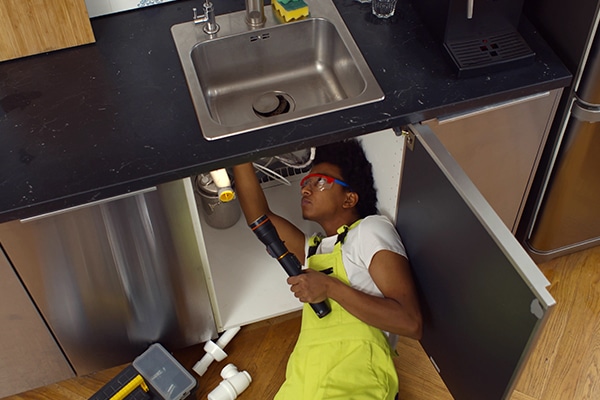A Detailed Guide to Reliable Hot Water Heater Setup for Optimum Efficiency
Embarking on the job of installing a water heating unit is a venture that requires precision and an organized technique for achieving optimum efficiency. The procedure starts with the vital choice of choosing the suitable heating system customized to the particular needs of your home, considering elements such as kind, size, and power source. When selected, preparing the installment location to fulfill safety and security requirements is extremely important. The journey does not finish below. As you continue, the ins and outs of linking water lines and establishing reputable electric or gas connections await, appealing understandings right into ensuring effectiveness and dependability.
Choosing the Right Water Heater

Following, consider the size and capacity of the water heater. It's important to evaluate your home's warm water needs, which can vary based upon the number of occupants and their use patterns. A system that's also small may result in insufficient warm water, while a large version might result in unnecessary energy consumption.
Performance scores additionally play a pivotal role in option. Search for hot water heater with high Power Factor (EF) ratings, suggesting remarkable performance and lowered power usage. Tankless versions, though typically much more expensive ahead of time, offer considerable energy cost savings in time due to their on-demand heating capacities.
Preparing the Setup Area
Before mounting a brand-new water heating system, meticulous preparation of the installment location is vital. It's essential to gauge the space carefully to fit the water heater's dimensions, making certain sufficient clearance around the device for effective operation and maintenance.
Inspect the flooring for security, as the water heating system will certainly require a strong, degree surface area to operate efficiently. If necessary, set up a drip pan under the unit to catch possible leakages or spills, protecting against water damage to the surrounding location.
Furthermore, make sure that all essential devices and materials are on hand before commencing the installment. This includes products such as wrenches, screwdrivers, a level, and any type of extra equipment required for mounting and protecting the heating unit. A well-prepared installment area sets the structure for an effective hot water heater setup, maximizing efficiency and safety.
Connecting Supply Of Water Lines
When connecting supply of water lines to your freshly installed hot water heater, it is crucial to guarantee that all connections are safe and secure and leak-free to keep efficient procedure and stop water damage. Begin by determining the warm and chilly water system lines. The cool water inlet is normally marked with a blue tag or a "C", while the hot water electrical outlet is noted with a red tag or an "H".
Use versatile water heater ports to help with a simpler setup procedure. Before attaching the connectors, put a plumber's tape around the threaded ends of the water heating unit's inlet and electrical outlet pipelines.
Once links remain in location, gradually switch on the main water system valve. Examine each link for leakages by visually really feeling and checking for wetness. Tighten connections as required, and make sure the pressure safety valve is correctly mounted, securing against extreme stress accumulation.
Establishing Up Electrical or Gas Links
Properly establishing up the electric or gas connections for your water heating system is an important action to additional reading make sure efficient and risk-free procedure. For electrical water heating units, begin by confirming that the electrical circuit is compatible with the heater's voltage and amperage needs.
For gas water heating systems, security is extremely click to read more important. Verify that the gas supply is off prior to proceeding. Connect the gas line to the water heating system utilizing a versatile gas port, ensuring it is appropriately threaded and secured with pipeline joint compound or Teflon tape ideal for gas links. Tighten up the connections with a wrench, taking care not to over-tighten (Plumber Alabaster AL).
Once connections are made, inspect for any type of prospective leaks. For gas lines, apply a soapy water remedy to the joints; bubbles show a leakage. For electric connections, confirm that all electrical wiring is safe and secure and correctly shielded, keeping compliance with local electric codes.
Readjusting and evaluating for Efficiency
With the electric and gas links safely in location, the next action is examining the functional effectiveness of your water heating system. Begin by meticulously turning on the water supply and making certain there are no leaks at any of the shutoffs or joints.
Following, carry out a complete inspection to ensure the home heating aspects or burner are operating appropriately. For electrical heating systems, utilize a multimeter to verify if the click for more info components are drawing the ideal present. In gas versions, observe the heater flame; it must be blue and steady, indicating efficient combustion.
Change the setups as required to eliminate ineffectiveness. Consider executing insulation actions, such as adding a water heating system covering, to further boost performance by minimizing warm loss. Additionally, check the anode rod's problem, as a tatty pole can reduce efficiency and bring about tank rust.
Final Thought
Effective water heating unit installment is important for guaranteeing optimal performance and power cost savings. Firmly linking water supply lines and very carefully setting up electric or gas links reduce possible problems.

Correctly establishing up the electric or gas links for your water heating unit is a critical action to ensure risk-free and reliable operation. For electric water heaters, begin by validating that the electrical circuit is compatible with the heating unit's voltage and amperage demands. Attach the gas line to the water heating system utilizing a versatile gas adapter, guaranteeing it is effectively threaded and secured with pipeline joint compound or Teflon tape appropriate for gas links.
 Kirk Cameron Then & Now!
Kirk Cameron Then & Now! Val Kilmer Then & Now!
Val Kilmer Then & Now! Jennifer Love Hewitt Then & Now!
Jennifer Love Hewitt Then & Now! Erika Eleniak Then & Now!
Erika Eleniak Then & Now! Peter Billingsley Then & Now!
Peter Billingsley Then & Now!